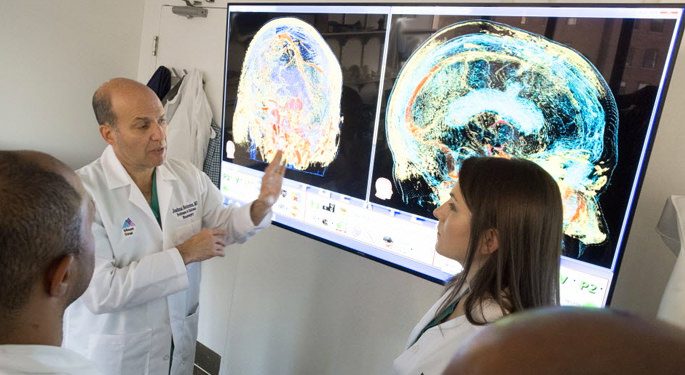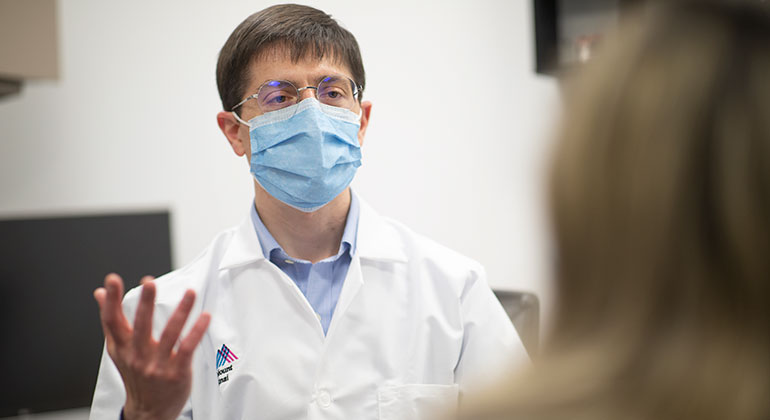Treatments and Procedures


"The vast majority of meningiomas are permanently cured by simple and safe surgical removal," says Joshua Bederson, MD, Professor and Chair of Neurosurgery at The Mount Sinai Health System in New York City. "In certain cases, when the tumor involves critical structures, we'll remove 95 to 99 percent of it and observe the rest. If the tumor begins to grow back, radiation can stop its growth."
The key to preventing disability from meningioma is early diagnosis and development of a treatment plan. At Mount Sinai, the two primary approaches we use to treat meningiomas are surgery and radiation.
If your tumor is growing slowly and does not affect your health, we may choose to observe your tumor at scheduled intervals rather than treat it immediately. We might schedule you for regular magnetic resonance imaging scans to monitor the tumor's growth.
We may choose to do a surgical removal (resection) of the tumor. If we do so, we use the Simpson Grading system to indicate the level of cure we were able to achieve. The grades are:
- Grade I, excellent, is the complete removal of the tumor including resection of underlying bone and associated dura (the membrane encasing the brain and spinal cord).
- Grade II, good, is the complete removal of the tumor and destruction of the dural attachment (root of the tumor).
- Grade III, fair, is the complete removal of the tumor without destruction of the dural attachment.
- Grade IV, poor, is the incomplete or partial resection of the tumor.
Most of the time, surgery cures the tumor. If you need further treatment, we will use our neuropathologist’s assessment of your tumor to develop a treatment plan.
We treat some Grade IV menigiomas with surgery, radiation, and occasionally chemotherapy as well.